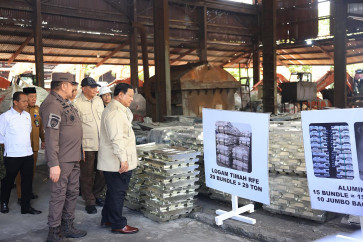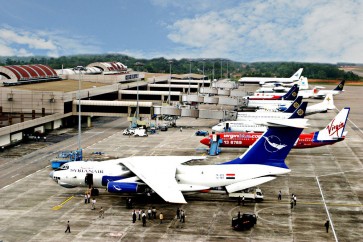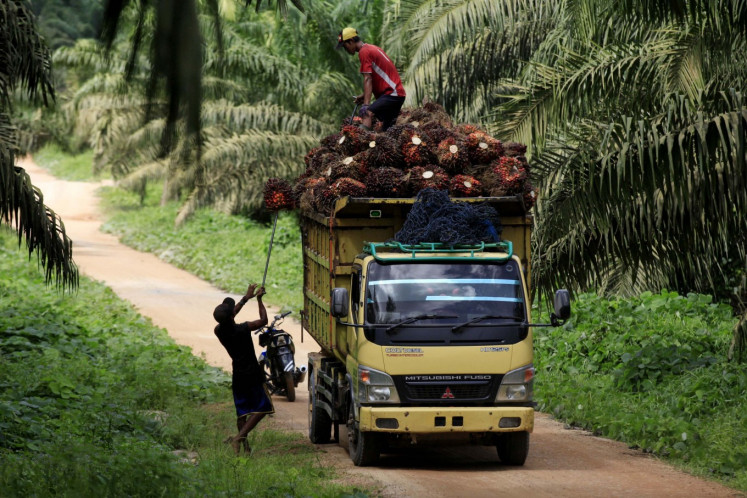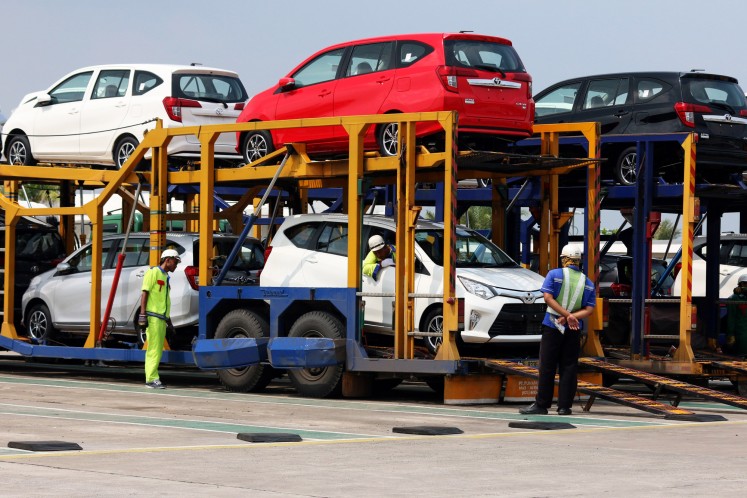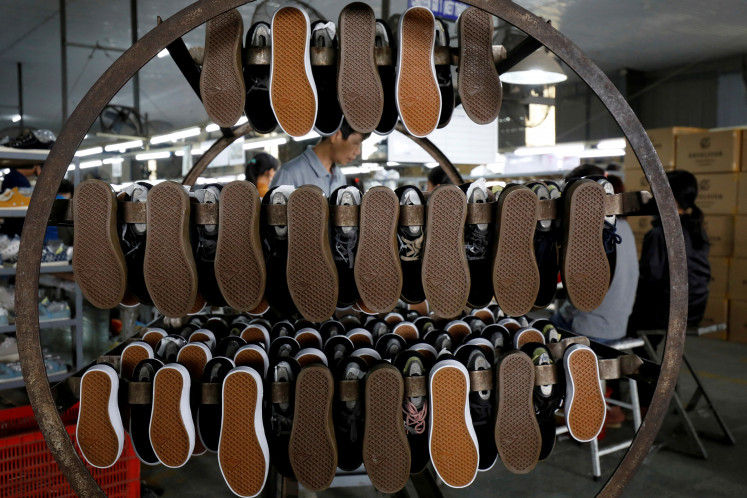Popular Reads
Top Results
Can't find what you're looking for?
View all search resultsPopular Reads
Top Results
Can't find what you're looking for?
View all search resultsPushing alternative energy in cement industry
In short terms, some cement industry players have implemented several strategies to mitigate rising coal prices.
Change text size
Gift Premium Articles
to Anyone
T
he cement industry is currently facing challenges because of rising coal prices. An increase in coal prices causes an increase in production costs for the industry. Statistics Indonesia (BPS) industrial manufacturing data show coal makes up 75 percent of energy costs for the cement industry, with energy reaching 30 to 40 percent of total expenditure. The price of Newcastle coal on Oct. 15 was US$245 per ton, an increase of 204.4 percent year to date (ytd).
In the short term, cement industry players have implemented several strategies to mitigate rising coal prices. Some have contracted for one year and have increased stock-pilling to reduce the impact of the price rise. Nevertheless, we predict the increase in production costs will cause a decline in profits, with cement industry players finding it difficult to raise cement prices given the overcapacity of market conditions. Price raising is the last option for cement companies, but this should occur gradually and be limited, especially in areas with a relatively large market share.
We have seen that the impact of rising coal prices on production costs varies in the industry, and this depends on the energy mix used by each company. Companies that have implemented fuel cost efficiency will experience a relatively lower impact than others. Some cement industry players, such as Semen Indonesia Group and Indocement, have implemented energy cost efficiency by increasing the use of alternative fuels, comprising biomass, refused derived fuel (RDF) from waste and mixing coal with an increase of low calorific value (LCV) coal. Indocement, for example, has implemented energy cost efficiency by increasing the use of alternative fuels from 2.3 percent in 2015 to 11.7 percent in the first half of this year. Indocement has also increased its use of coal mixed with LCV coal from 8 percent in 2015 to 87 percent in the first half of the year.
Besides mitigating coal price fluctuations, increasing the use of alternative energy in the cement industry can reduce CO2 emissions. The cement industry produces a lot of CO2 emissions in production, including in the process of mixing limestone raw materials as well as fuel using coal. Industry players have continued reducing CO2 emission in recent years, but the impact is still relatively low. For example, Semen Indonesia Group has succeeded in reducing CO2 emission from 634 kg CO2/ton in 2019 to 607 kg CO2/ton in 2020.
According to the 2017 IFC World Bank study on international best practices, waste that can be used in cement plants as alternative fuel is classified into five broad categories. They include hazardous waste (spent solvents and used oil, wood and plastic packaging), non-hazardous industrial and commercial waste, municipal waste, biomass (agriculture and agro-industrial waste, green waste) and other unclassified alternative fuels such as animal meal, plastic and wood waste from the construction and demolition sectors, used tires and rubber waste. In Indonesia, some companies have so far used Fly Ash and Bottom Ash (FABA) as alternative raw materials with an average of 10 to 20 percent depending on the type and price of cement, as well as refuse derived fuel (RDF) from waste, sourced from the integrated garbage facility in Bantargebang, Bekasi, West Java.
In the medium term, cement industry players should increase the use of alternative energies to mitigate rising coal prices and reduce CO2 emissions. Some companies have been using alternative energy since 2015 but the share of alternative energy to total energy remains relatively low.
Lessons learned from international best practices include in Poland, which has seen the rapid evolution of its alternative fuel substitution rate. Based on the IFC World Bank study, the share of alternative fuels in Poland’s cement sector was 45 percent in 2011, and it has continued to increase to now above 60 percent. Some cement plants are even using up to 85 percent alternative fuel. Poland’s key success in increasing alternative fuels is the strong commitment of the sector. It has shown strong commitment in grasping alternative fuel market opportunities as they emerged; establishing mid-term and long-term contracts with the waste management sector; smart and continuous investments in the handling and preparation of alternative fuels; and the development of skills and technology in kiln operation to accept low-quality alternative fuels. Other strategies are ongoing, including the enforcement of waste regulations, particularly those related to landfill, and a favourable economic context comprising smart national and international investments, taxation on landfilling and alternative fuel opportunities supported by European subsidies.
To increase the use of alternative energy in the cement industry, successful international practices can be adopted in Indonesia. Strong commitments by the industry are important to increase energy alternatives, such as the development of technological skills in kiln operation to accept low-quality alternative fuels and establishing mid-term and long-term contracts with the waste management sector.
Government support is needed to encourage the cement industry to use alternative energy. The government can introduce regulations that support the transition such as licensing simplification and fiscal incentives. Furthermore, we see local administrations can play an important role in collaborating with cement industry players in managing municipal waste.
Therefore, increasing the use of alternative raw materials and alternative fuels would make the cement industry more efficient and sustainable. The cement industry can also reduce the impact of the carbon tax due to lower CO2 emissions. From April 1, 2022, the implementation of the carbon tax (cap and tax) will be limited to power plants. This will change in 2025 when the government plans to implement the carbon tax for industries other than power plants with a carbon tax tariff of Rp 30,000/tCO2e (US$2.13).
***
Senior Regional Analyst, PT Bank Mandiri (Persero) Tbk



